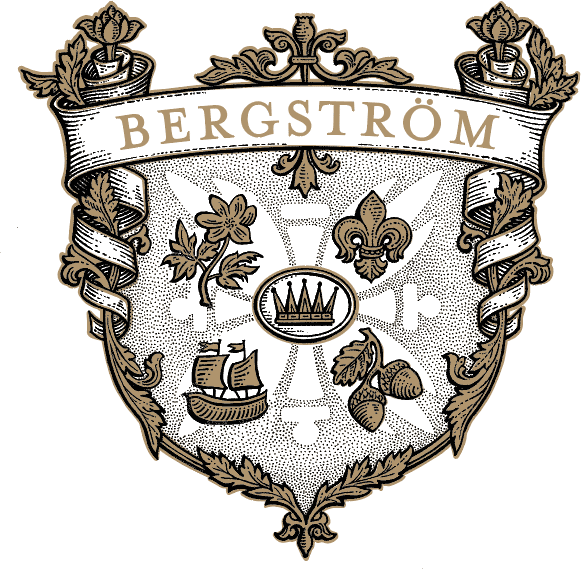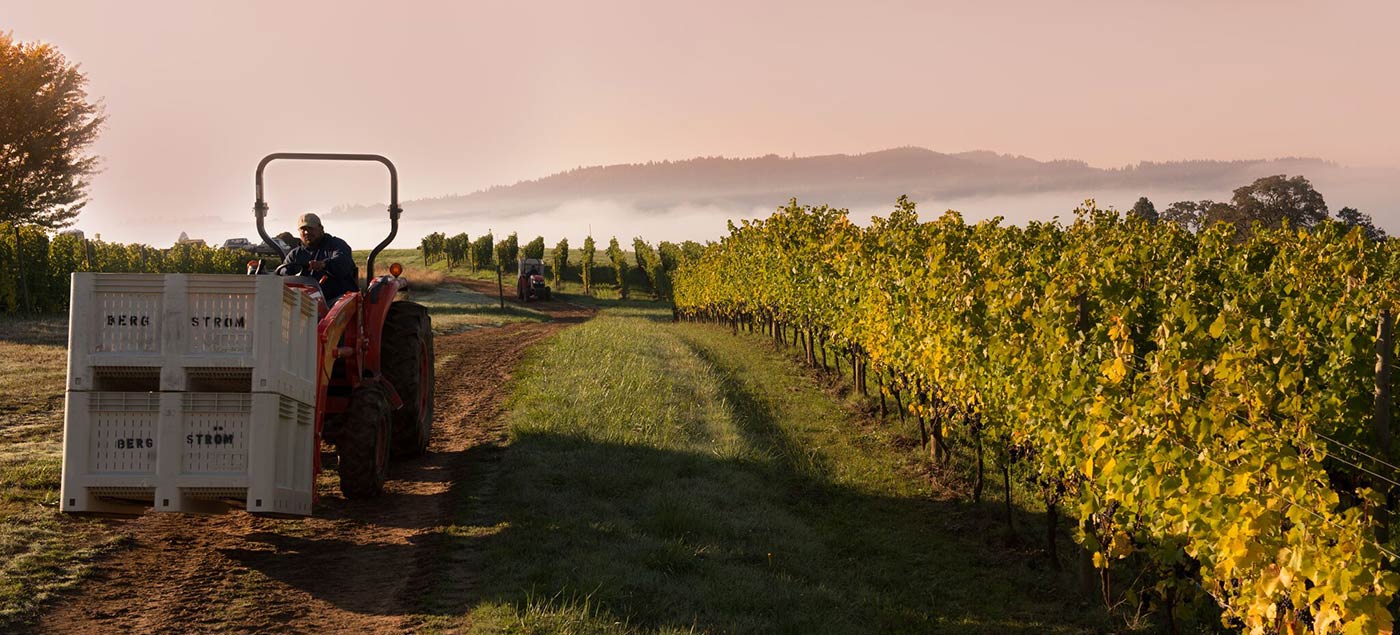After the driest September and October in Oregon’s history, the rain has finally begun to fall again on the Pacific Northwest and although I never thought I would hear myself say it: I welcome its return. We have had months without measurable precipitation and the soil is very dry. The Willamette Valley has been choking in an unbearable dusty haze from the hazelnut vacuums blowing and billowing clouds of brown silty earth and the still dry air almost looks smoggy from it all. The trees and vines have all started to show their fall colors but many vineyards lost most of their leaves weeks ago during the week long assault by the dry easterly winds which robbed what little humidity was left from their already suffering canopies. Now the rain brings relief and a reset to our fall season. Oregon rain at harvest can bring unwanted grief and worry but it can also bring a thankful cleansing. But one thing is certain, rain is a constant. We always have to deal with rain in one form or another during harvest. Gratefully, this year the rain is not a worry.
We have harvested over 130 tons of fruit (104 Pinot Noir and 26 Chardonnay) and we have another 80-100 tons to go, mostly from the later blocks of Gregory Ranch, Shea,Temperance Hill, Le Pre du Col and de Lancellotti Vineyards. We have harvested all of the Bergstrom Vineyard, all of Croft Vineyard and the most precocious blocks at all of our other estates and the vintage thus far has been a dream come true. I mentioned earlier that we were tracking closely with 2008 and 2002 and I can now see similar characters in the harvested fruit and musts in tank. The fruit is bleeding dark color almost immediately upon entry into tank and the fruit aromas from the juice are intense. The insides of my tanks look purple, and I don’t know if it sounds silly to say that the fruit juice smells like purple, but it does.
The rain that is falling now does not bother me. In fact, I am getting excited about Chanterelle season because I know that they will start growing in the next 7 days. But back to grapes; we will probably not start harvesting again for several days, most likely starting up again on the 19th and looking to finish the harvest over another 5 day period. The rain will wash all of the dust off of the leaves and grapes and hopefully refresh the vines and fruit a little bit and, if we are lucky, even encourage the vines to give us one last burst of ripening effort by quenching their long overdue thirst. But the reality is that the soils are so dry that it will take inches and inches of rain before the deep vine roots can access this moisture, so for now I believe that the gift falling from the sky for now will simply just clear away the dust.

A wonderful three piece band serenades happy diners at Bergstrom Wines on the first night of the harvest dinner series.
Last weekend we put the harvest on pause and opened our doors to wine club members from around the United States for our sold out, annual, harvest dinner series. We sat and served 100 guests each night on Saturday and Sunday and a great time was had by all. The annual Harvest Dinner Series at Bergstrom Wines is when we have an opportunity to say hello and thank you to all of our wine club members who can make it out for the dinners as well, we release our coveted “Homage” Pinot Noir and it is the only time during the year that we open bottles for people to taste of this very special wine. The 2010 “Homage” Pinot Noir was met with great enthusiasm and many bottles were drained alongside a wonderful cheese plate at the end of a fantastic meal. Thank you to all of our club members who attended and thank you to my staff and the “Art of Catering” for once again pulling off such a satisfying dinner series.
After the dinners were over, we re-arranged the cellar and crush pad, rolled out all of the tables and chairs, folded up the chef’s tent, composted the flowers and rolled up our sleeves. Monday we harvested nearly 30 tons of fruit from de Lancellotti Vineyard and Le Pre du Col. This 19 hour work day was rewarded with 4 hours of sleep and then we started all over for Tuesday. The week went on like this with long days of work, many vineyard blocks harvested, most of our tanks filled with clean and pristine fruit and our i-pod playlists exhausted in duplicate or triplicate…. I honestly can’t remember. But I do know that we have been working a lot and I am very happy. Our team is a good lot, the conditions could not be better and after 16 years of making wine in Oregon, I could not be more inspired to go to work every day.
The pace of the primary harvest has been fair and free of anxiety. I am usually not a worrisome type during harvest; trying to stay true to the pace of the annual farming cycle. We are a winery, not a kitchen. Our work is more of an evolution and a process, less of a one day production. We have spent 9 months farming this crop, so I am in no hurry to rush a picking decision or force a fermentation. I have found that the tanks that take their time and go their own pace, usually make the best wines. The ones I have forced are usually my least favorite. These wines will ferment slowly and age gracefully for 12-18 months before we put them into their bottles and then they will continue to slowly evolve for a decade or two before they truly arrive at their ideal drinking window. So why rush? Yes, decisions need to be timely and based on good data and intuition, but just because it is harvest time, doesn’t mean that everything has to be harvested right now.

Lily is definitely taking it easy and soaking up some of the last fall sunshine while Katie and Rusty pump over a tank in the background.
The Chardonnays have also been very promising this year and we currently have 64 barrels of fermenting juice on the northern patio. I find that leaving barrels outside to ferment during the fall and early winter works very well. The rain and cool temperatures act just like a world class barrel cellar. If the mercury threatens to rise or the nights get too frosty, we bring them inside so as not to speed up or shock the busy yeasts inside of their individual vessels. This usually allows for a slow and gentle fermentation that can often times last several weeks. When we are finished barreling down the last of the Pinot Noirs, we will bring the Chardonnays indoors so that they can happily finish up their primary fermentations and begin to focus on the secondary bacterial fermentation, called malolactic, free from spikes in temperatures.
Today half of our team takes a rest and tomorrow the second half takes its turn. It is important to take a break when you can during harvest, especially since we have a big push in picking coming up this week and we have yet to get in to the laborious punchdown schedule of fermentation. That is where exhaustion usually sets in. The clock also drops back one hour and the rain will fall harder and temperatures will drop further. We need to be rested and healthy going into the final push.
Stay tuned this week for a lot of action. But in the case of little to no action in the winery, then we will take to the coastal hills where there will be a lot of Chanterelle harvesting!



